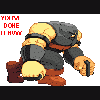I didn't know how to put these between the pictures.
Hubble telescope's top ten greatest space photographs
> The Sombrero Galaxy - 28 million light years from Earth - was
>voted best picture taken by the Hubble telescope. The dimensions of the
>galaxy, officially called M104, are as spectacular as its appearance. It
>has 800 billion suns and is 50,000 light years across.
> The Ant Nebula, a cloud of dust and gas whose technical name is
>Mz3, resembles an ant when observed using ground-based telescopes. The
>nebula lies within our galaxy between 3,000 and 6,000 light years from
>Earth.
> In third place is Nebula NGC 2392, called Eskimo because it
>looks like a face surrounded by a furry hood. The hood is, in fact, a ring
>of comet-shaped objects flying away from a dying star. Eskimo is 5,000
>light years from Earth.
> At four is the Cat's Eye Nebula, which looks like the eye of
>disembodied sorcerer Sauron from Lord of the Rings.
> The Hourglass Nebula, 8,000 light years away, has a
>pinched-in-the-middle look because the winds that shape it are weaker at
>the centre.
> In sixth place is the Cone Nebula. The part pictured here is
>2.5 light years in length (the equivalent of 23 million return trips to the
>Moon).
> The Perfect Storm, a small region in the Swan Nebula, 5,500
>light years away, described as 'a bubbly ocean of hydrogen and small
>amounts of oxygen, sulphur and other elements'.
> Starry Night, so named because it reminded astronomers of the
>Van Gogh painting. It is a halo of light around a star in the Milky Way.
> The glowering eyes from 114 million light years away are the
>swirling cores of two merging galaxies called NGC 2207 and IC 2163 in the
>distant Canis Major constellation.
> The Trifid Nebula. A 'stellar nursery', 9,000 light years from
>here, it is where new stars are being born.




